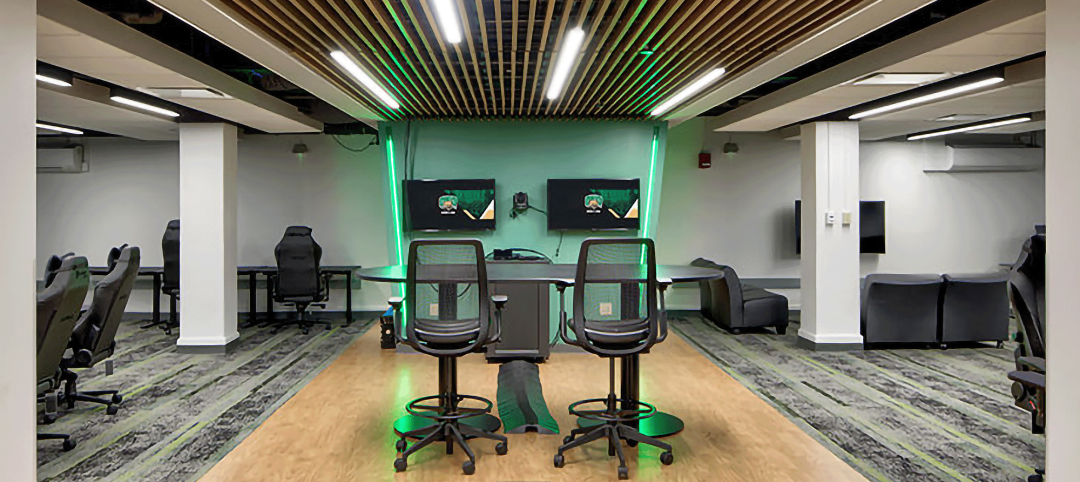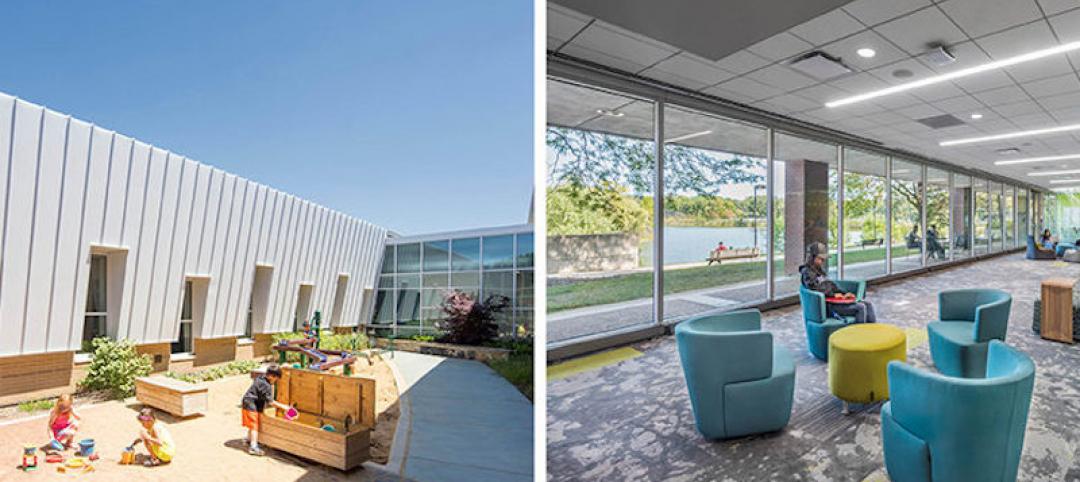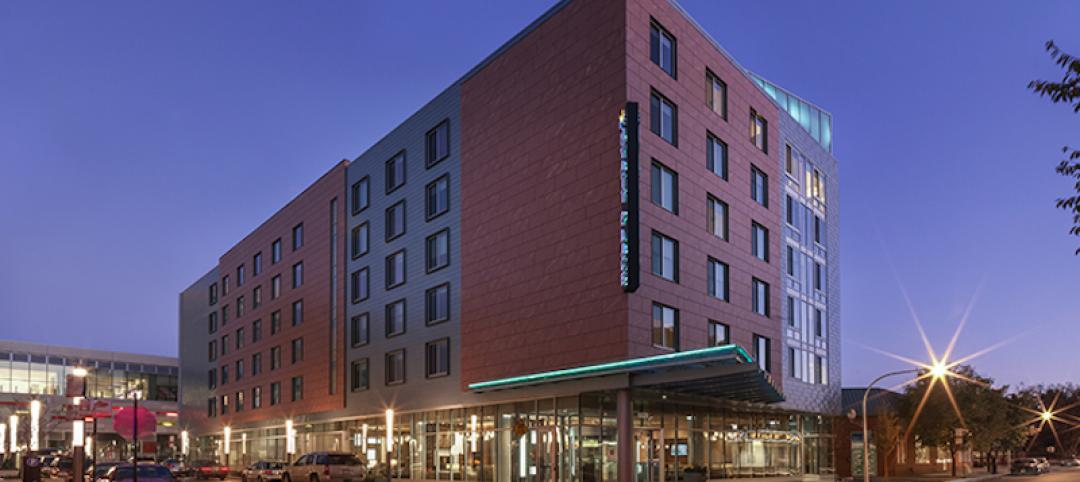With threats ranging from severe weather to active shooters, school leaders, designers, and security consultants face many challenges in creating safe environments that allow children to thrive.
Paul Timm, PSP, school security expert and vice president at Facility Engineering Associates, explains the one thing that underpins everything when it comes to setting a course for a school’s security. “If you do not have effective communications,” he said, “you do not have safety and security.”
The following case study of one small Chicago-area school district exemplifies how educators can prioritize student safety through strong communication. Medinah School District 11 (Roselle, Illinois), located 30 miles northeast of downtown Chicago, not only improved security but also made its facilities more attractive and reinforced district values.
The district tasked Legat Architects and Facility Engineering Associates with improving security at its primary, intermediate, and middle schools. This overview focuses on the enhancements at Medinah Primary School.
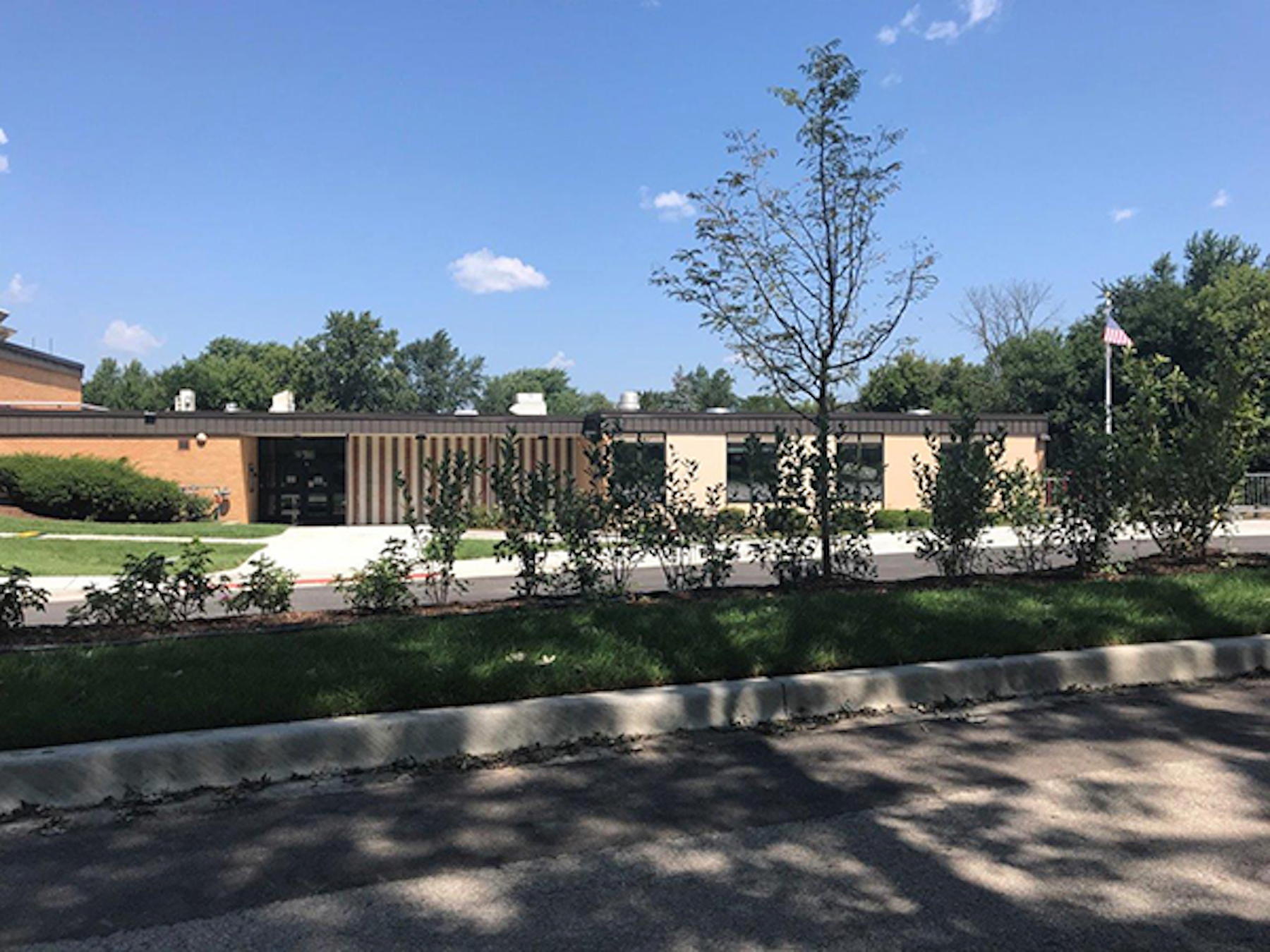
It Starts Outside
School campus safety starts well before students walk through the door. At Medinah Primary School, parking lot upgrades create a safer and more efficient drop-off routine. Previously, students would exit buses on a street flooded with cars of parents dropping off their children. A new bus loop incorporated into the front yard allows students to safely step off buses and onto a sidewalk, without interference from other car traffic. A landscaped berm between the loop and the street adds curb appeal and creates a natural, protective barrier for students.
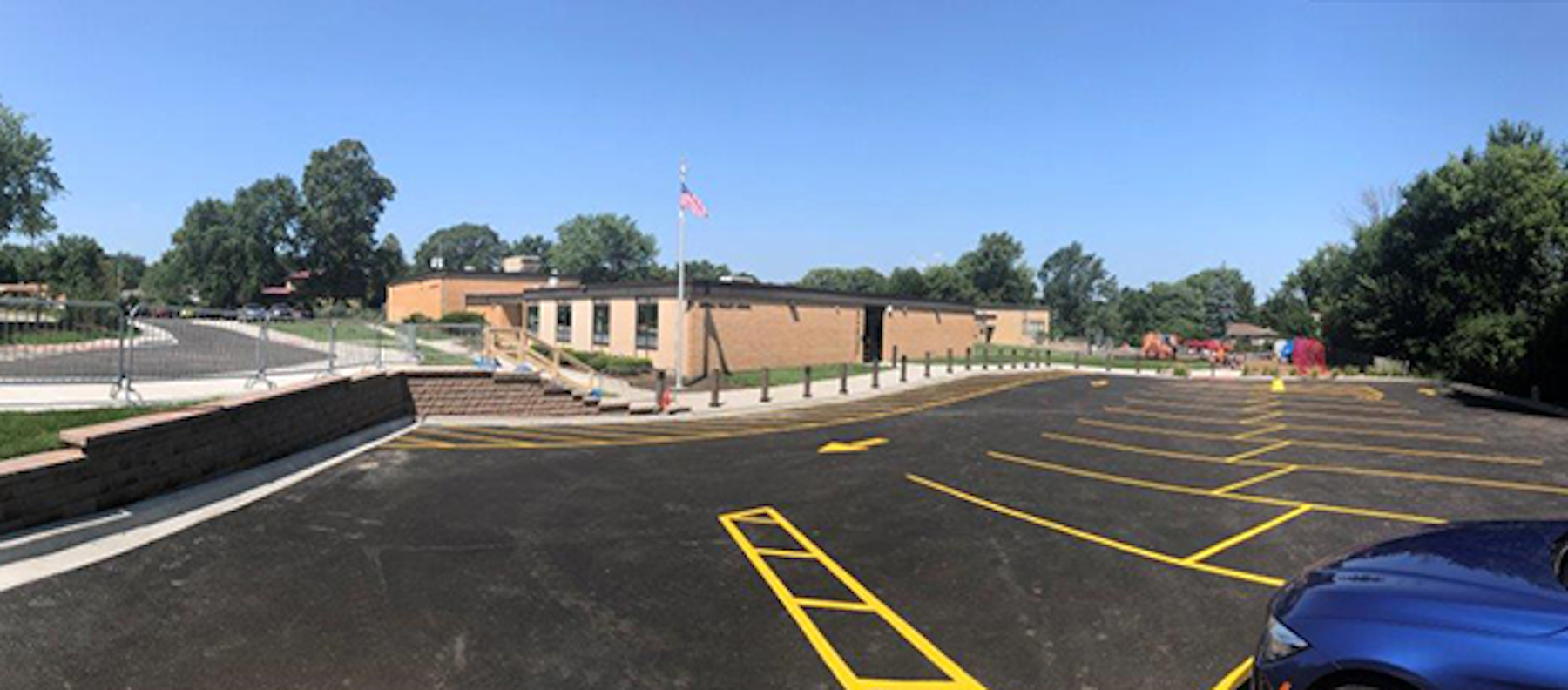
Additionally, a student drop-off drive and visitor parking lot allow parents to loop around to a new secured entrance and watch their children walk the short distance to the door. This drive also creates a clear separation between bused students and those being dropped off by car.
Another parking lot safety improvement at Medinah Primary School is the addition of bollards along the sidewalk next to the parking lot. If a distracted driver inadvertently starts to move toward the sidewalk, these concrete posts are designed to stop the car.
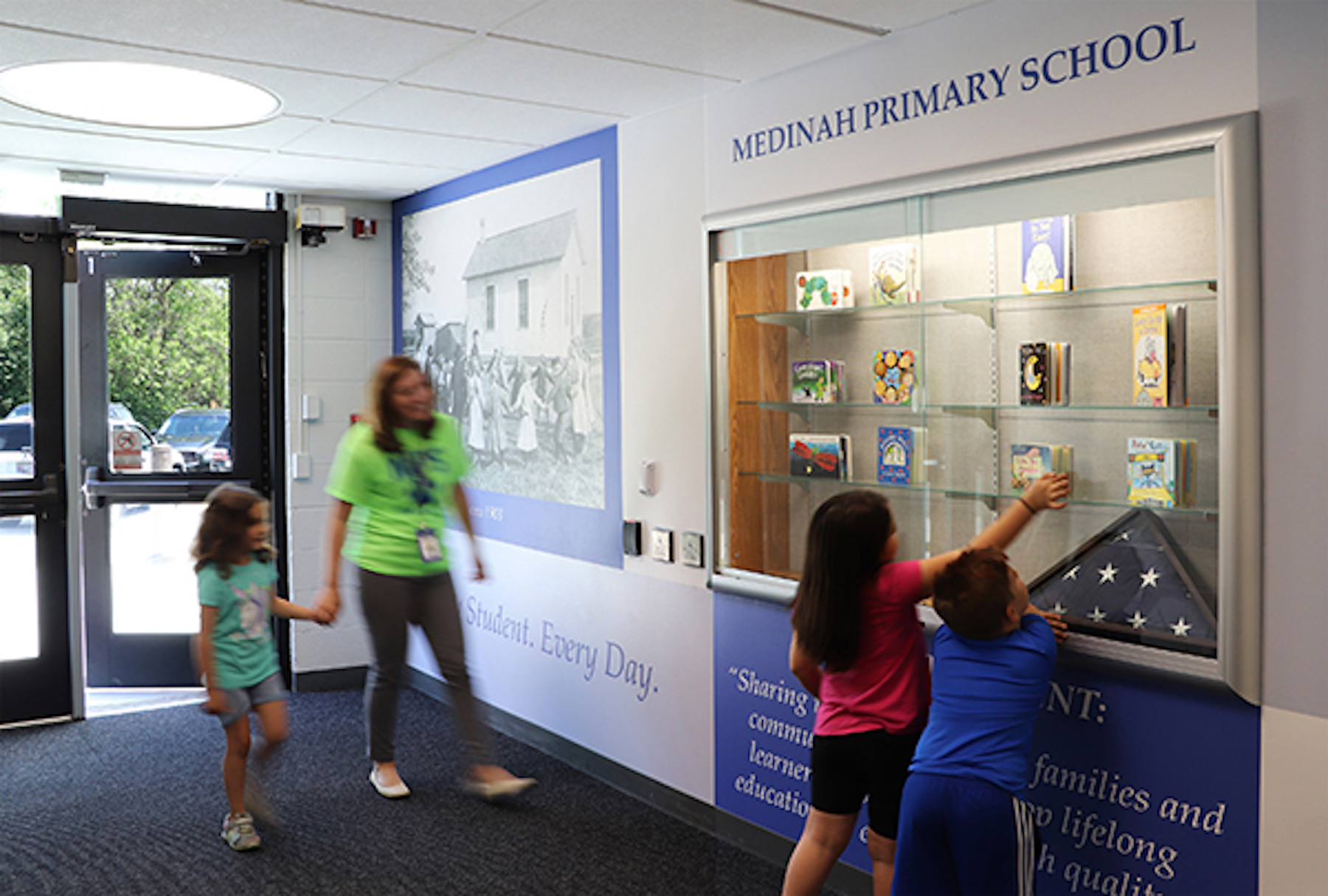
Safe and Welcoming
How easy is it for a visitor to get into your school? When it comes to school security, access is one of the most important considerations.
Paul Timm said, “You cannot name a school violence incident that occurred without some kind of failure of access control.”
Ideally, a visitor at an entry first encounters a video intercom system that requires them to state why they want to enter the school. If comfortable with this first interaction, staff members give the visitor access to a secure vestibule. Here the visitor shows an ID through a sliding glass window too small to jump through. If the credentials check out, the visitor is finally allowed to enter the school or office.
Like many older schools, Medinah Primary School had its entry vestibule and administrative suites in different parts of the building. Visitors could walk right into the school. A remodel created a controlled vestibule by moving the administration to the front of the school. Upon entering the vestibule, visitors must now check in with the front office staff at a sliding window.
The design takes the vestibule one step further — instead of simply being a plain area where parents and their children wait to speak with office staff or get buzzed in, the vestibule celebrates the district’s history and values. It features a mural with a photo of the first district school (built in 1903), the district logo, and slogans capturing the district mission/vision (e.g., “Medinah Chooses KIND” and “Every student. Every day.”). It also has a display case that exhibits student projects or educational tools.
At Medinah, security does not stop at the vestibule. Consider this hypothetical scenario: a divorced father plans to pick up his daughter, then whisk her off to another state. A staff member does not learn the father’s intent until after he leaves the office and enters the school. It’s not too late — the office is equipped with an internal distress button that alerts staff in the building and the district. A secondary 911 distress button is in two places at the main desk, as well as in the principal’s office. If the father tries to break through, administrative staff can hit another button that activates electromagnetic locks at all doors.
Meetings Matter: The More Participants the Safer
Security meetings at Medinah School District 11 united administrators, staff, social workers, first responders, and the architectural and security teams. Early involvement of local fire and police departments proved critical for strengthening the district’s emergency response plans.
During these meetings, we looked at everything from existing protocols to signage and reporting procedures. The meetings revealed that the schools were not taking advantage of the emergency features of the visitor management system they had. Consequently, staff received training on effective use of the system, including how to use pre-recorded messages.
Another discovery was that when parents or visitors arrived at the entry, they did not know the intercom system had a button they had to push to speak with staff. A sign from the manufacturer quickly addressed this problem.
The meetings also considered what to do about “tailgaters,” or unconfirmed visitors who follow vetted guests past security checkpoints. It can be difficult to say, “I’m going to open the door for you only but not for the people behind you.” The district developed a protocol to address this issue.
Other specific changes range from new doors to replace older ones that sometimes did not latch — blame the Midwestern weather — to expanding security notifications from solely email to email and text so that people will see them much faster.
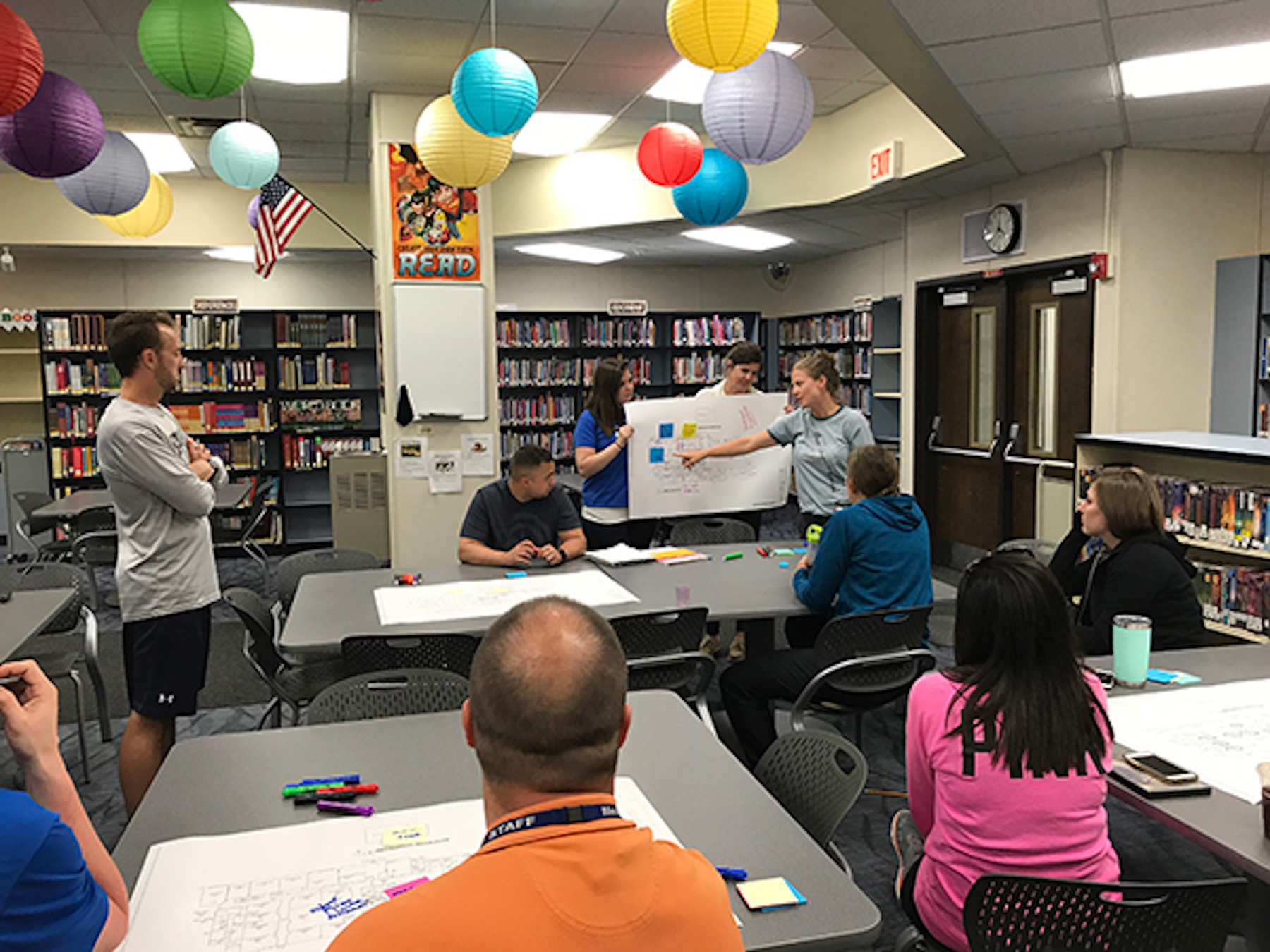
More from Author
Legat Architects | Feb 9, 2024
Disability and architecture: ADA and universal design at college campuses
To help people with disabilities feel part of the campus community, higher education institutions and architects must strive to create settings that not only adhere to but also exceed ADA guidelines.
Legat Architects | Jun 5, 2023
How to achieve cost-effective kindergarten classrooms
Educational architect Robin Randall shares realistic advice about the challenges of adding developmentally appropriate, play-based kindergarten classrooms while respecting budget limitations.
Legat Architects | Dec 19, 2022
Ohio University’s OHIO Esports Arena redefines video gaming
If a college student enjoys film studies, there is probably a place on campus where they can join other film buffs. But where can students who like video games go?
Legat Architects | Nov 30, 2022
10 ways to achieve therapeutic learning environments
Today’s school should be much more than a place to learn—it should be a nurturing setting that celebrates achievements and responds to the challenges of many different users.
Legat Architects | Apr 6, 2021
Architecture and daylight: Planning strategies for energy-efficient buildings
Energy efficient, healthy, and affordable: the predictable nature of seasonal daylight geometry makes it one of the first topics to be considered when undergoing any design project.
Legat Architects | Jul 28, 2017
Achieve hospitality architecture that impresses – Multigenerational appeal, local connections
Did guests get the experience that they paid for? This question has long haunted hotel operators.
Legat Architects | May 16, 2017
Architecture that helps children fall in love with the environment
The coming decades present a major ecological challenge... so let’s encourage the next generation to do something about it!
Legat Architects | Mar 30, 2017
Train station architectural design fundamentals: Accessibility
If safety is the number one priority for train stations, then accessibility comes in at a close second.




